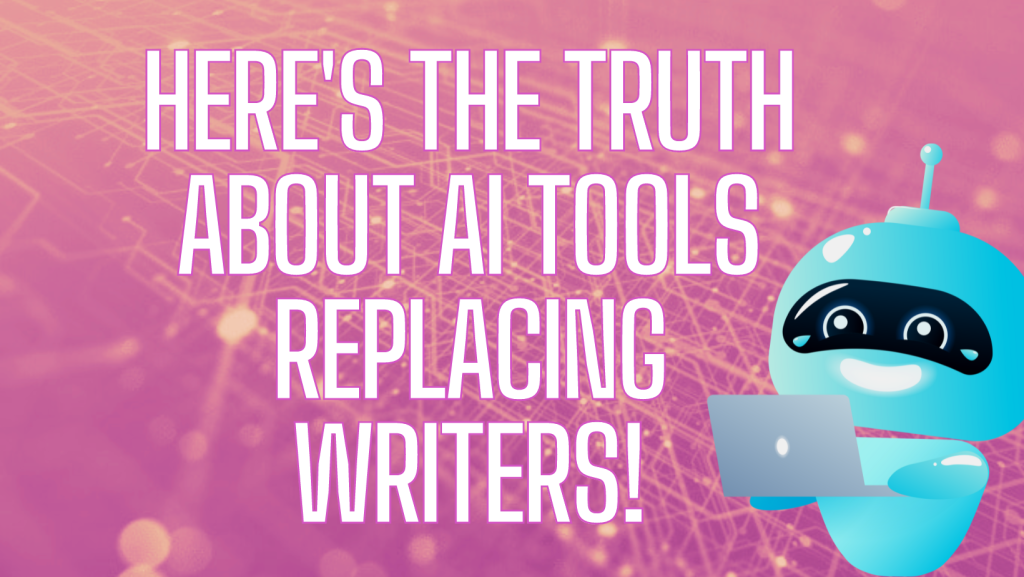When it comes to creating high-quality content that resonates with audiences and encourages engagement, copywriters and content writers have long been the go-to professionals.
But nowadays, AI writing tools are becoming increasingly popular as a way to automate and streamline the content creation process. From Jasper and Copy.ai to ChatGPT and Bard AI, AI writing tools are taking the content creation world by storm.
Naturally, as a business owner or content manager, you may find yourself wondering whether these AI writing tools are really a viable replacement for human writers. After all, it’s hard to argue with the convenience they offer in terms of fast and efficient production.
But can an AI-powered tool ever truly produce content that rivals the quality of what a human copywriter or content writer would put out? Let’s talk deeper about this whole AI writing tool craze, shall we?
A Disclaimer Worth Mentioning
Since I’ll be providing you with my insights on this subject, I want to start off by saying that my goal here isn’t to tell you whether or not you should make the switch. Instead, I’m here to provide you with an overview of the pros and cons of using AI writing tools so that you can make an informed decision.
On that note, it’s worth mentioning that everything I’ll be saying in this post is based on my personal experience. I’ve been experimenting with Jasper for over a year now (ever since it was called Jarvis!), I worked with Copy.ai (as an SEO Content Writer) for around a year, and I’ve been solo experimenting with ChatGPT for 3 months now. That’s all to say that I’m not just sitting here making baseless assumptions—I’ve actually used the tools in question.
And if you’re here for the first time, I’m a copywriter and content writer, so most of my trials with AI writing tools have been focused on creating copy and content to see how they perform compared to me (the human).
With that disclaimer out of the way, let’s get into it!
The (Very Impressive) Pros
Let’s start with the positives of AI writing tools that have led them to cause such a stir.
Quick and Easy Content Production
There’s no denying it – the biggest advantage of AI writing tools is the sheer speed with which they can produce content or copy. I can easily argue that these tools are faster than the fastest human writer out there. When given a prompt, the AI can generate content in a matter of seconds. It’s almost like having a content factory at your disposal!
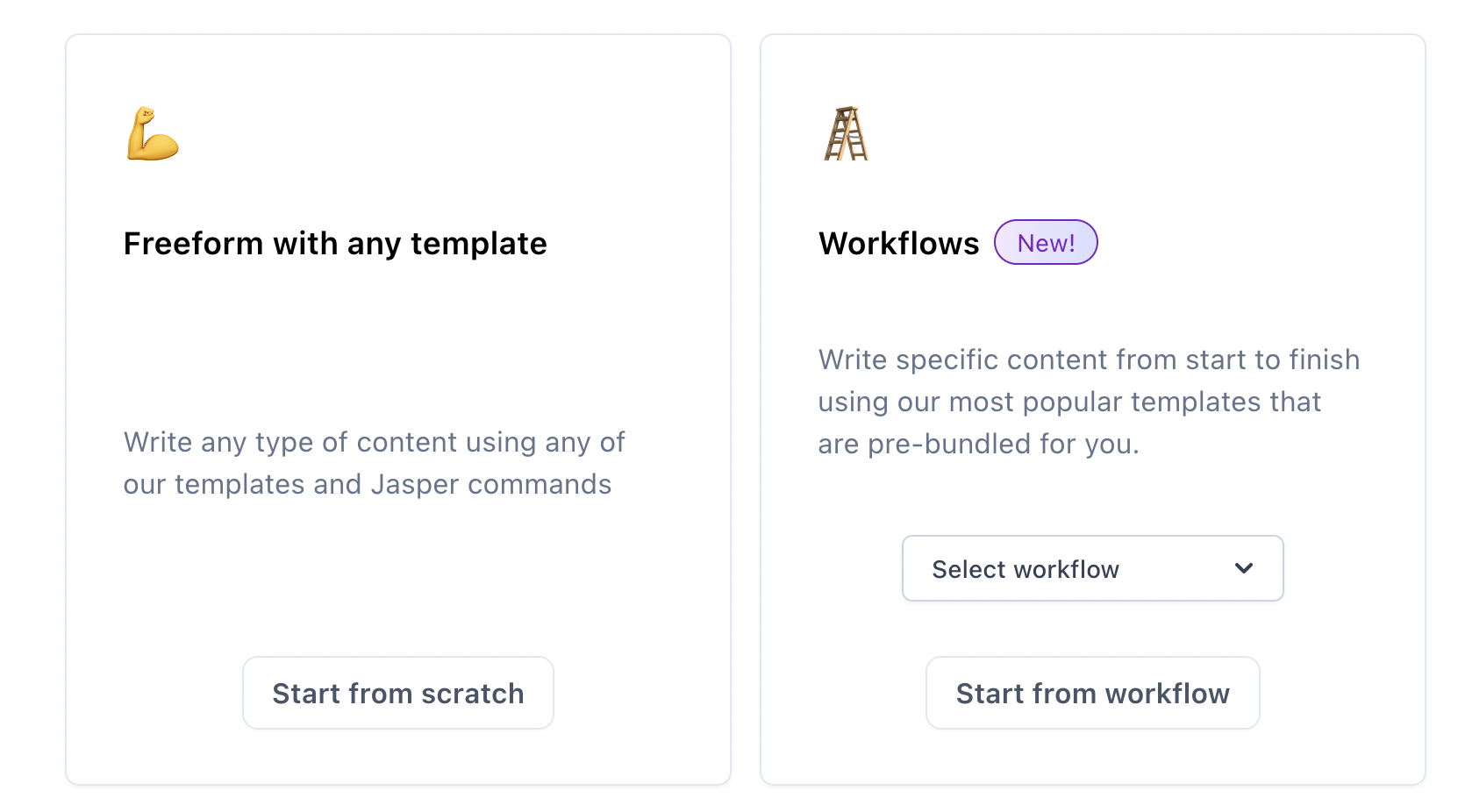
On top of that, I don’t want to forget the “easy” part. AI writing tools are, by definition, easy to use. You just need to give the tool a prompt that can be as short as a single sentence, and the AI will take it from there.
Pro Tip: I’ve found that the longer and more detailed the prompt I give the AI, the better result I get.
Tightly-Knit Content Output
AI writing tools are also great at providing well-written and tightly structured content—no grammar mistakes or typos here! It’s almost like having a human proofreader on call 24/7. The outputs are all formatted correctly (you can even tell the AI exactly how you want it formatted), too. That comes in handy when you need to quickly generate content that looks professional.
Catering to a Wide Variety of Content/Copy Types + Topics
Nothing is too much for AI writing tools, from outlines and meta descriptions to full-blown blog posts and sales sequences. You can quite literally hit the ground running and generate content/copy that caters to your specific needs almost instantaneously!
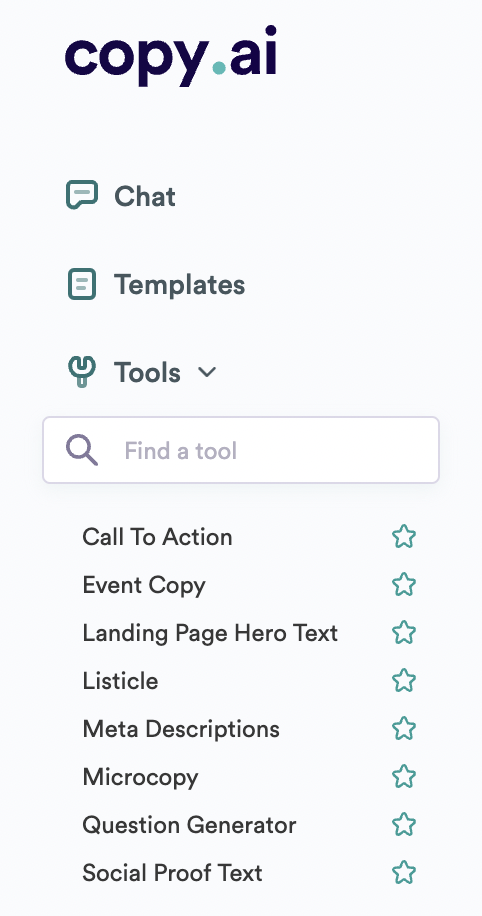
The same applies to the actual topics you’re creating the content for. You don’t have to worry about the AI struggling to understand complex concepts or topic-specific language. And if you’re feeling particularly daring, you can even get creative and ask the tool to create something out of nothing—you may just be surprised by what it comes up with!
Plenty of Revisions
Sometimes, even though you’ve given the AI a great prompt and asked it to generate content in your desired style, you may not be pleased with the output. That’s when revisions come in handy!
Most AI writing tools allow you to tweak the output by providing additional prompts or more detailed instructions. In other words, if something is still off after the AI has generated the content, you can fix it without having to start from scratch.
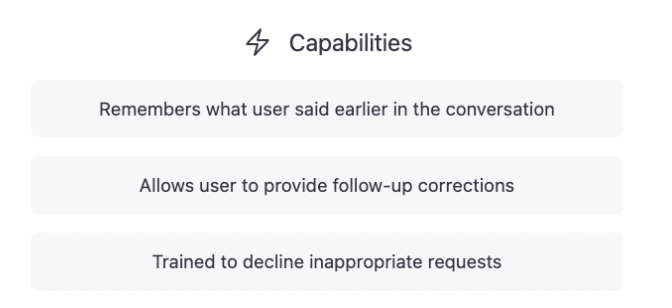
I found this particularly useful for brainstorming and generating ideas. I’d get the AI to generate multiple variations of a single idea, and then I’d choose the best one after a few revisions. It made my life so much easier!
Automating Repetitive Tasks
Finally, you can use AI writing tools to automate repetitive tasks. For instance, if you provide your writers with briefs on a regular basis, you can ask the AI to generate the briefs for you instead. That way, you save yourself some time and energy!
The same goes for sending emails to potential customers or preparing templates for your team members. You can get the AI to do most of the heavy lifting for you so that you and your team can focus on more important tasks.
It’s an invaluable asset if you’re looking to optimize your workflow and take a lot of unnecessary stress off your shoulders!
The (Very Serious) Cons
All of that being said, I’d be remiss if I didn’t mention some of the not-so-great aspects of AI writing tools. After all, nothing is perfect!
They Sometimes Lie
Yes, you read that right. AI writing tools have been known to lie from time to time, so it’s important to double-check the accuracy of their outputs. This is especially true if you’re using the tool for something like research, fact-based content, or legal documents.
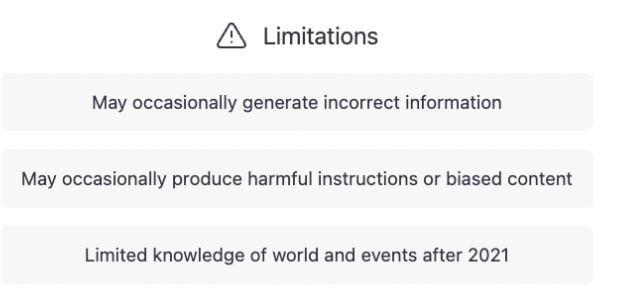
They absolutely can’t be trusted with statistics, figures, or other types of data.
They Stopped Learning in 2021
AI writing tools have been around for a few years now, and the technology has advanced significantly. However, some of them stopped learning in 2021, which means that anything that happened after that won’t be reflected in the outputs they generate.
 So if you’re writing something about current events or trends, that won’t work!
So if you’re writing something about current events or trends, that won’t work!
Their Output Will Only Be as Good as Your Input
While it’s true that AI tools won’t “force you” to give them detailed instructions, it’s important to remember that their outputs will only be as good as the instructions you’ve provided. If you rush through the process or don’t give them enough information, the outputs won’t be nearly as good. In fact, they might not even be usable!
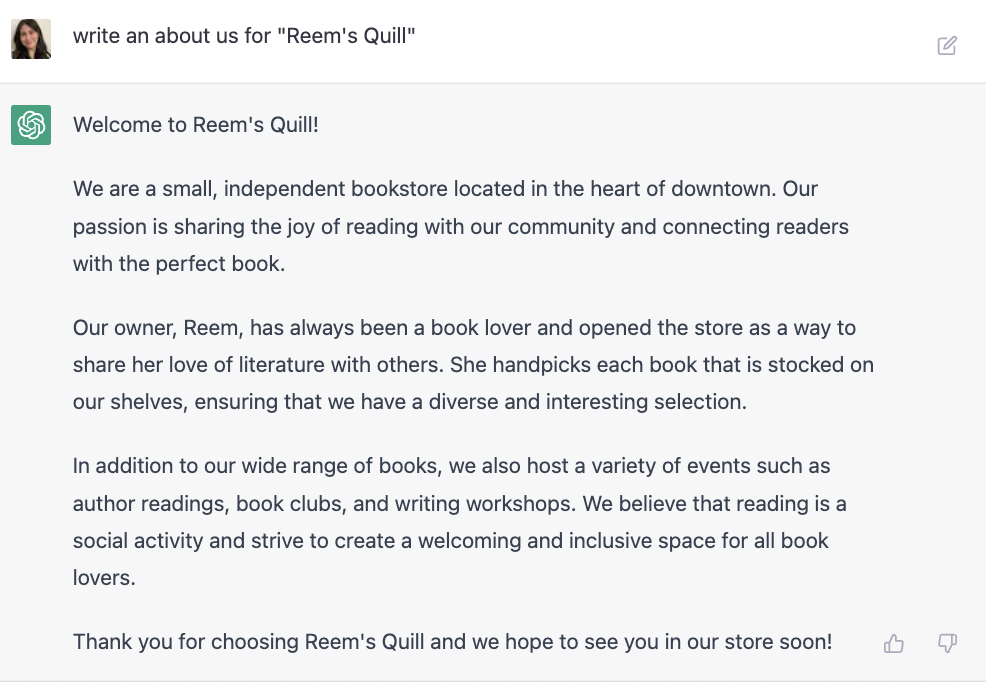
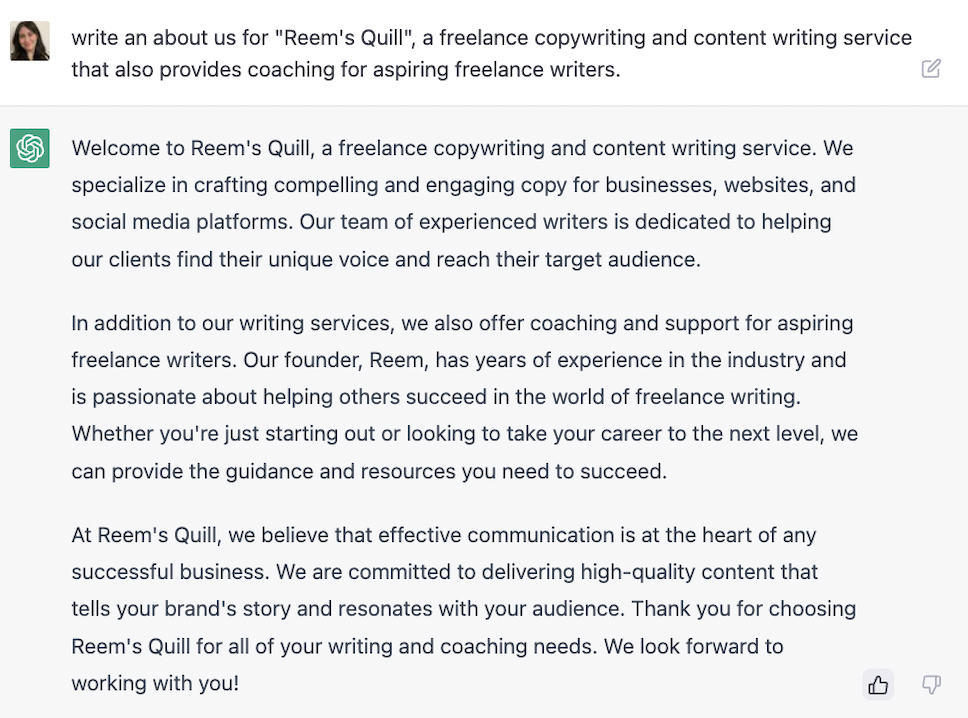
Many users think that AI writing tools are like mind readers, but they’re not—however advanced the technology may be. You still need to feed them with clear instructions and detailed briefs if you want to get the best possible results! For that reason, new jobs are emerging in the market, such as AI prompt writers and content strategists!
They Aren’t Necessarily Creative or Original
One of the biggest misconceptions about AI writing tools is that they’re creative. The truth is, they aren’t.
The way their language model works makes these tools take “existing” content and repurpose it in new ways. So while they can certainly create something unique, it won’t be particularly creative or original—at least not yet. All of the output is based on information that’s already out there.
Extra information: To give you an idea, these tools currently use GPT-3, a type of natural language processing technology, to generate their outputs. How this works is that the algorithm takes a “seed” (which can be anything from a single word to an entire paragraph) and then spits out content based on the seed based on the training it has received. It’s all based on patterns it has already seen, meaning the outputs are far from original.

It’s for that reason that there are now AI detectors, like Originality.AI, that are capable of determining (with the highest degree of accuracy possible at the moment) whether a piece of content is AI-generated or human-crafted.
They Can’t Replicate the Human Touch/Personality
Sometimes, you need that human touch to really bring your content to life. AI writing tools are great for streamlining the process and helping you create content quickly, but they can’t quite replicate the kind of unique thinking and creativity that a writer brings to the table.
That’s because they’re not “living” creatures—they don’t have the capacity to dream up ideas, think critically, or be as creative as a human. After all, they’re just machines that have been programmed with certain rules and parameters! But with human writers, you can be sure that your content will always have an extra special touch.
The Output Is (Usually) Generic
Personalization is a big part of content creation, and it’s what sets a piece of content apart from the rest. Unfortunately, AI writing tools aren’t particularly great at that—their outputs tend to be generic and formulaic, so you shouldn’t expect their outputs to be highly targeted to your audience.
No matter how good the technology may be, it still won’t understand your audience’s needs as well as you do. And to make it understand, you’d quite literally have to write everything out for it, which defies the purpose of using an AI writing tool in the first place!
Forget About Consistency in Tone of Voice
No matter how good the technology may be, it’s still incapable of replicating the consistency in tone of voice that a human can provide. That’s because an AI writing tool doesn’t understand context—it simply takes existing content and repurposes it for new outputs. So each time you use it, the tone of voice might be a bit different from the last time.
That can be an issue if you’re trying to create content that maintains a consistent brand image and identity—you simply won’t have that with an AI writing tool. Neither will any brand relying on AI writing tools, and the result of that is that all the content ends up looking and sounding the same.
The Output Isn’t High-Quality Enough to Rank
Google recently added an extra E to its Quality Rater Guidelines (EEAT), which places a greater emphasis on “experience”. The guidelines are now as follows:
→ E (Experience) – First-hand, direct experience or knowledge (actual use of a product, having actually visited a place, or communicating what a person experienced).
→E (Expertise) – The level of skill and knowledge that the writer has on the subject.
→A (Authoritativeness) – The trustworthiness and authority of the writer/source.
→T (Trust) – The writer’s ability to provide accurate, error-free information.
Based on these guidelines, it’s safe to say that AI writing tools don’t quite hit the mark when it comes to creating content that ranks in Google. Since AI writing tools are solely based on existing information and patterns, their outputs rarely have a personal touch or enough depth to really stand out from the crowd.
That means no matter how good the content is, it’s probably not going to be high-quality enough to rank.
At the End of the Day, It Pays to Invest In Professional Writers
When you weigh both the pros and cons, it’s clear that you’re better off investing in a professional writer than using an AI writing tool. That’s my opinion, and it’s not just because I’m a copywriter and content writer myself—it’s because it makes perfect sense.
That’s because even if you do choose to reply on AI writing tools, you’d need a human writer to make the necessary tweaks and edits to make your content and copy up to scratch. Whether that’s by injecting a bit of personality into the piece or ensuring that it meets all the EEAT criteria, something will always need tweaking.
So if you’ll pay for human writers anyway, why not just skip the AI writing tools and get the job done right from the start? Professional writers are able to create content that is both engaging and high-quality right from the get-go, and they understand your audience better than any machine ever could.
Sure, there’s no harm in bringing in the AI tools as an added layer of support, but not vice versa. When it comes to creating content that stands out, converts, and ranks, investing in professional writers is hands down the way to go. In fact, they might be able to help you find a way to get the most out of both worlds—AI writing tools and human writers. That way, you can reap the benefits of AI-generated content while also ensuring that your brand’s unique voice shines through!
The Bottom Line
No matter what your opinion is on AI writing tools, they’re definitely worth a try! Just make sure there’s someone competent behind the wheel so that you don’t end up with lackluster results.

And definitely don’t be fooled by the promise of AI writing tools as a replacement for writers—the technology just isn’t there yet. You get what you pay for, so if you want quality content, you must invest in human writers. So go forth with confidence and trust in the power of the write stuff (pun intended)! It never hurts to have a pro in your corner!
Fun fact:
I was recently hired as an AI Blog Post Specialist by a company that wants to try out AI writing tools to supplement their content production processes. My role will be to help them get the most out of their AI tools while also making sure that their original brand voice is maintained.
Who knew it was possible to combine two seemingly opposite things like this? It just goes to show that anything is possible if you’re willing to think outside the box! Do you want to try out something similar? Let’s chat!

